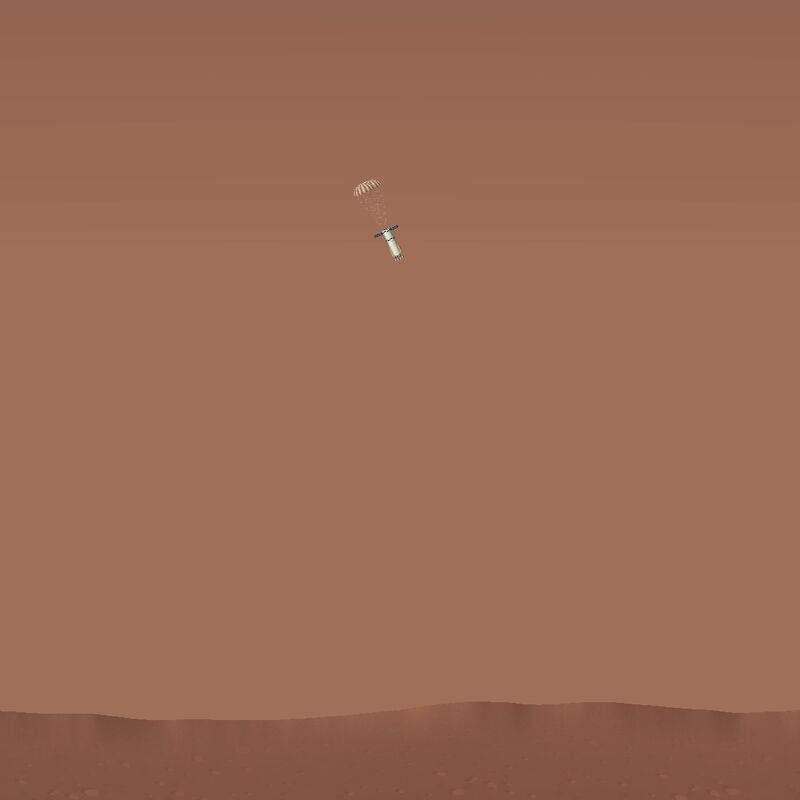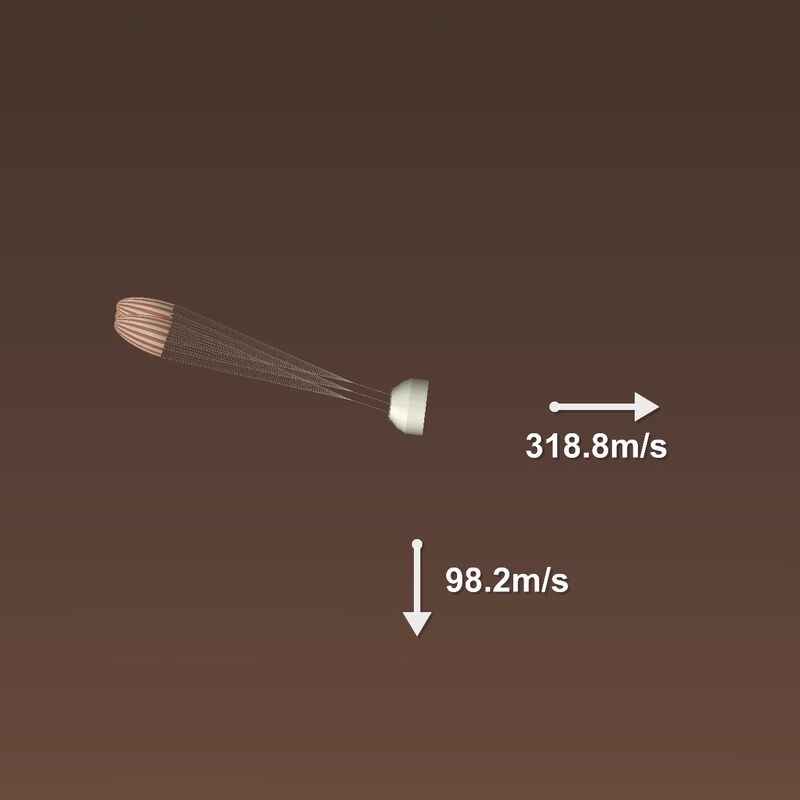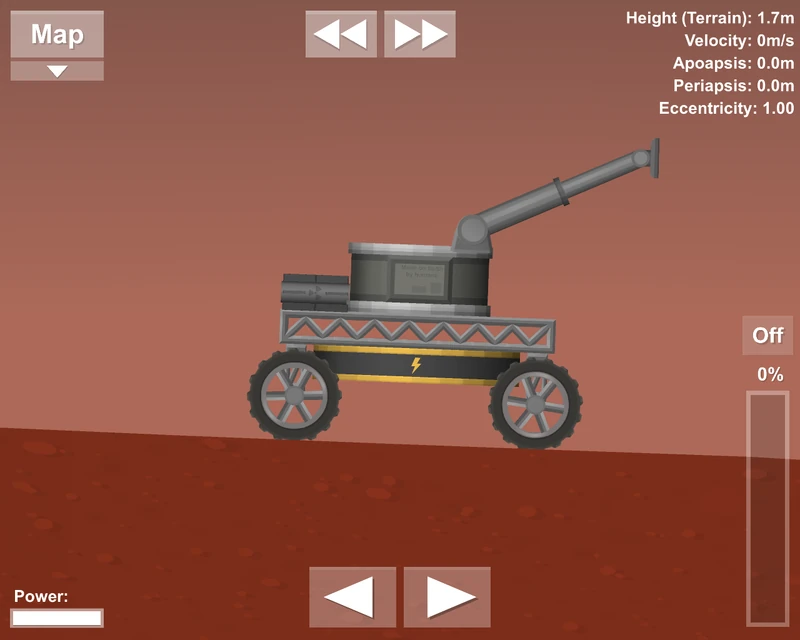Mars is the 4th planet from the Sun. It is half the size of Earth (making it the second-smallest planet being only larger than Mercury) and it has 2 small moons — Phobos and Deimos. It has a thin atmosphere that is around 6.25 times as thin as Earth's, which is useful for Martian atmospheric activities.
Mars is often one of the first places a player goes after the Moon. It is also good for practice with landing with atmospheres, using another planet's atmosphere for activities such as aerobraking, and practicing docking on its moons. Most players choose to land a rover first on Mars.
What to do on Mars?[]
Mars can be used for gravity assists for going to other planets (like an asteroid belt object, Jupiter or something), but they tend to be fairly small because of Mars’ low gravity, which is about 38% of that of Earth's gravity.
Mars can rarely be a hindrance to Jupiter missions, as it can get in the way of transfer windows.
Since it is relatively cheap to get into orbit around Mars, it is a good location for fuel depots or space stations.
Natural satellites[]
Two moons orbit Mars: Phobos and Deimos. They are irregular and they orbit close to Mars — closer than any other moon in the solar system. Both are small and have very weak gravity.
A player can practice docking of spacecraft on the moons during to their small size. Many players recreate sample retrieval missions on the Martian moons.
Phobos[]
Phobos is the larger, inner moon of Mars. It orbits once every 8 hours around the planet and it is porous. Its color is reddish or pinkish.
Phobos can be the key for the exploration for Mars.
Deimos[]
Deimos is the smaller, outer moon of Mars. It is around twice as small as Phobos and it is yellowish with a smooth terrain.
Atmosphere[]
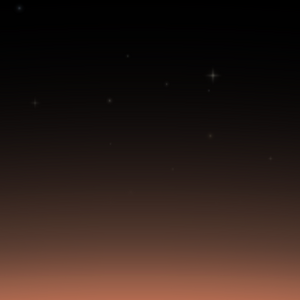
Martian atmosphere
Mars has a thin, reddish atmosphere that ends 20 kilometers above its surface. Its atmosphere is 0.16 times as dense as Earth's. Despite its thinness, it is sometimes useful.
Mars's atmosphere has the lowest curve (coefficient on how fast the atmosphere fades) of all the celestial bodies in the game — measuring at 8 — which is a quarter less than that of Earth, at 10.

The atmospheric pressure of Mars at different altitudes
Mars's atmosphere is half as dense by reaching roughly 1200 meters off its surface. Mars's scale height is around 2400 meters off its surface. Above 11.9 kilometers off its surface the atmosphere can only be slightly felt and it should be used by aerobraking above that height.
Atmospheric activities[]
Mars’ atmosphere allows the use of parachutes, which can be used to slow your rocket down, but oftentimes not enough to prevent damage. Parachutes can be deployed as early as 4.5 kilometers, but there might be some heating effects still present at this altitude.
The thin atmosphere of Mars both reduces drag for lift-off and for entry, meaning that retrorockets for heavy or manned landers is advised.
In the planet editor, the file name for Mars’s atmosphere is Atmo_Mars.
Mars’s surface[]

Martian surface
A guide to landing on Mars can be found here: Getting to Mars
The surface of Mars is covered in smooth, red rolling hills and some craters and is spotted with the occasional mountain structure called Olympus Mons. This makes Mars an ideal location for driving rovers, doing some research or building Martian bases/colonies.
Be careful when landing on steep slopes, as rockets with a high center of mass or thin bases will tip over and will be destroyed easily.
Landmarks[]
There are several landmarks on Mars.
Olympus Mons[]

Olympus Mons in physics view
- Main article: [[Olympus Mons]]
Olympus Mons is a volcano on Mars that extends up to 3.9 kilometers in the Martian atmosphere. It was added in the 1.4 update.
Olympus Mons is a good location to avoid the effects of Mars’s atmosphere, although parachutes can be deployed at 2500 meters above the surface of the volcano. It can be also used for challenges such as climbing on the structure using an airplane or ground vehicle, or setting up some Martian bases/colonies.
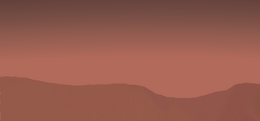
Valles Marineris[]
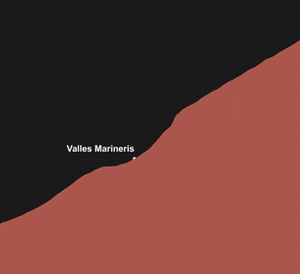
Valles Marineris is a valley on Mars. It is near the equator of the planet. The valley is deep — it is 3× the depth of the Grand Canyon. Its size can stretch across the United States.
Rockets that land near the valley will have little to no issues at all. Valles Marineris is also a good landing site for rovers and sample return missions.
If the rocket lands on the sides of the valley, it will tip over to the side and fall to the ground, causing severe damage to the rocket.
Hellas Planitia[]
Hellas Planitia is a basin on Mars. It is also the deepest point on Mars, at 8.5 kilometers below sea level. Surrounding this basin are a few craters that are small in size. They get deeper when getting to the sides.
This may be a prime landing spot on Mars, as its low elevation gives more atmospheric drag for parachutes to slow down a rocket to slower speeds than in sea level.
Gale Crater[]
Gale is a crater on Mars. It has a mountain on the center of it. It is related to the real life mountain called Aeolis Mons or Mount Sharp.
The Curiosity rover landed on this crater to find the ingredients of life and to investigate rocks on Mars.
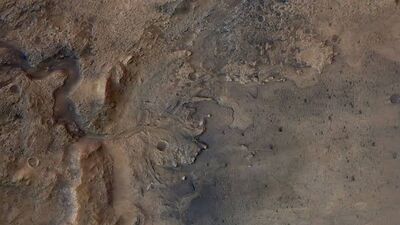
Jezero[]
Jezero is a crater on Mars. It is currently explored by the Perseverance rover and the Ingenuity helicopter. It might have had water in the past.
Utopia Planitia[]
Utopia Planitia is a circular plain on Mars. It is relatively flat with a few craters. The Viking 2 lander landed on this site inside a crater called Mie.
Arcadia Planitia[]
Arcadia Planitia is a plain on Mars situated at the northwestern side of the Tharsis region. Its southern side is filled with some deep craters.
Achievements[]
There are four achievements that can be obtained on on Mars:
- Captured into low Mars orbit
- Entered Mars's upper atmosphere
- Reentered Mars's atmosphere, max temperature %temperature%
- Landed on the surface of Mars
Gallery[]
Special Orbits[]
- Areostationary orbit: 851.6 km
- Areosynchronous orbit: 850 km
- Mars has lesser gravity than the real Mars, at 3.721 m/s2, than 3.61 in-game.
Trivia[]
- In the early updates Mars was among the first planets added.
- The sheer height of the mountain Olympus Mons means it is a hazard to rockets that land only using parachutes, as the atmosphere is very thin when it lands on the structure.
- Mars is one of three celestial bodies with a cloudless atmosphere, the other two are Europa and the Sun.
- In real life, Mars has thin clouds made out of water and carbon dioxide.
- Mars might have been habitable once. Because its core cooled down, the magnetic field disappeared and the solar winds stripped off of its atmosphere and it cooled down, causing water to freeze into ice, resulting into a barren Mars today. In the future, Mars might be terraformed, making Mars habitable again.
- Mars is also called the Red Planet because of its reddish surface.
- The red color of Mars comes from iron oxide or rust.
- Mars is explored by many spacecraft and rovers, like the Perseverance rover, which landed on Jezero crater on February 18, 2021 and the Ingenuity helicopter, which is the first aircraft that flew on another planet.
- Exploring Mars is hard. The reason why it is hard is because of possible mistakes such as computer glitches, delays, cancelled missions, and the most common thing is failures. This is the so called "Mars Curse".
- Only 54 missions were successful on the Red Planet.
- Landing on Mars is the most difficult: first a spacecraft can lose communication with mission control, second is how fast the spacecraft is going, and third is calculations.
- NASA dubbed it "EDL" meaning Entry, Descent, and Landing.
- The first spacecraft to land on Mars is Mars 3 which lost communications after landing.
- A launch window to Mars can take 26 months to occur; the coast to Mars can take on average of 8 months.
- Currently, there is a bug in which rockets landed at any landmark will randomly disappear. The failure message reads as “Crashed into another rocket”.
| Free | Planet DLC required | Upcoming/Custom | ||
| Sun • Mercury • Venus • Earth • Mars | Jupiter | Saturn • Uranus • Neptune | ||
| Mercury | ||||
| Venus | ||||
| Earth • Moon (Luna) • Captured Asteroid | ||||
| Mars • Deimos • Phobos | ||||
| ⠀ |
Jupiter • Io • Europa • Ganymede • Callisto | Metis • Thebe • Amalthea • Adrastea | ||
| Saturn • Mimas • Enceladus • Tethys • Dione • Rhea • Titan • Iapetus • Hyperion | ||||
| Uranus • Miranda • Ariel • Umbriel • Titania • Oberon | ||||
| Neptune • Triton • Proteus • Nereid • Larissa • Galatea | ||||
| Ceres • Pluto (Charon • Nix • Hydra • Stix • Kerberos) • Haumea (Hi'iaka • Namaka) • Makemake (MK2) • Eris (Dysnomia) • Sedna | ||||

